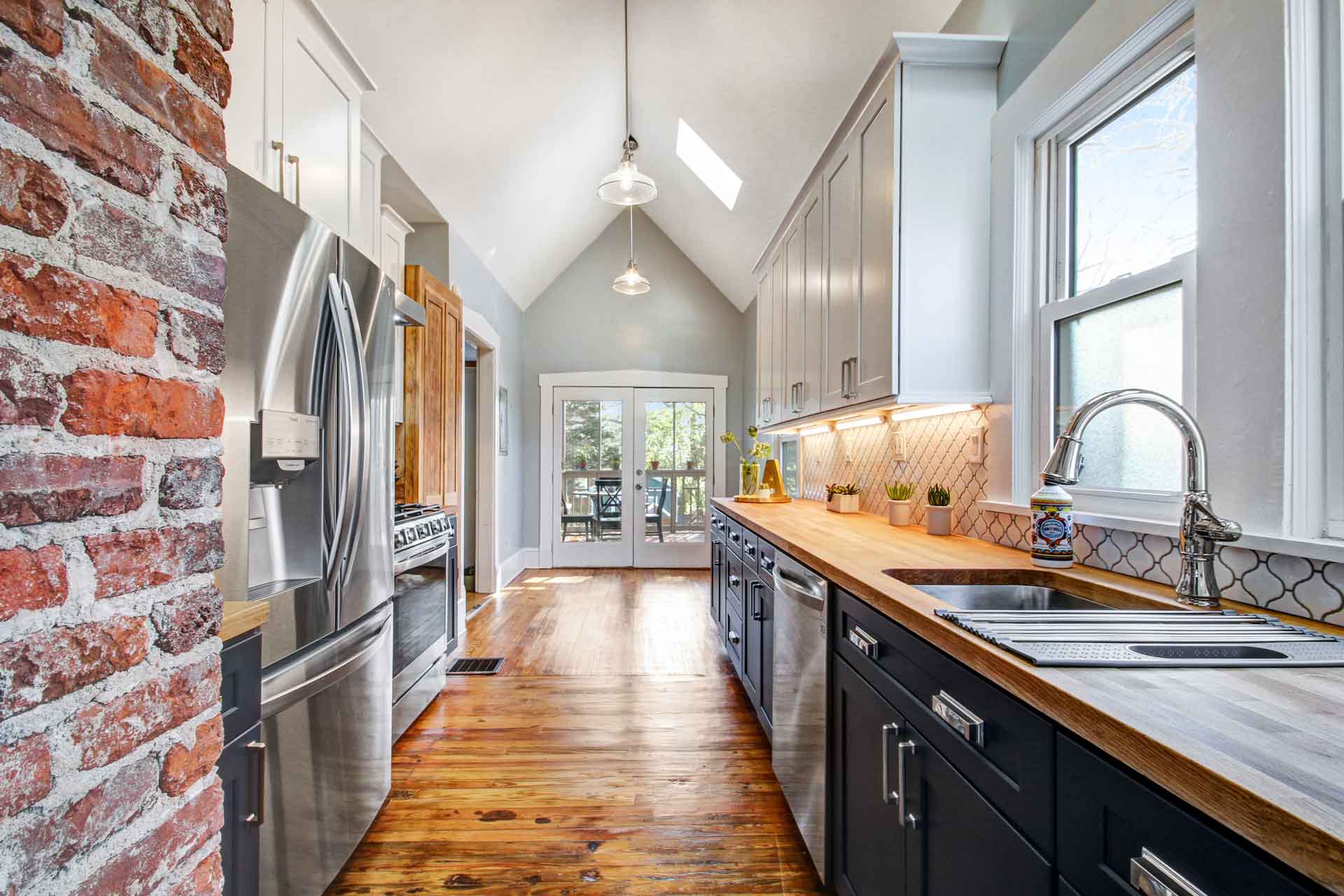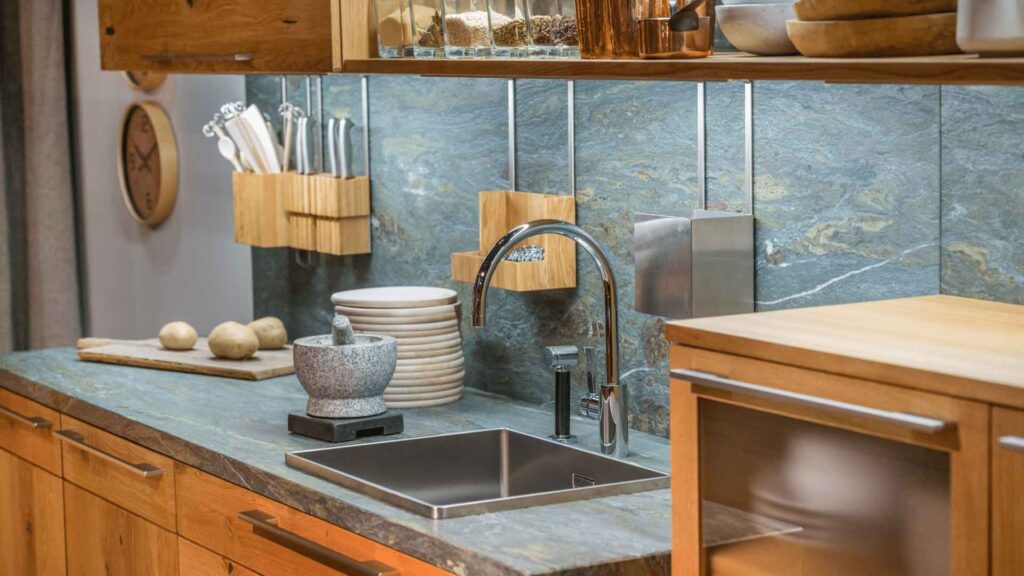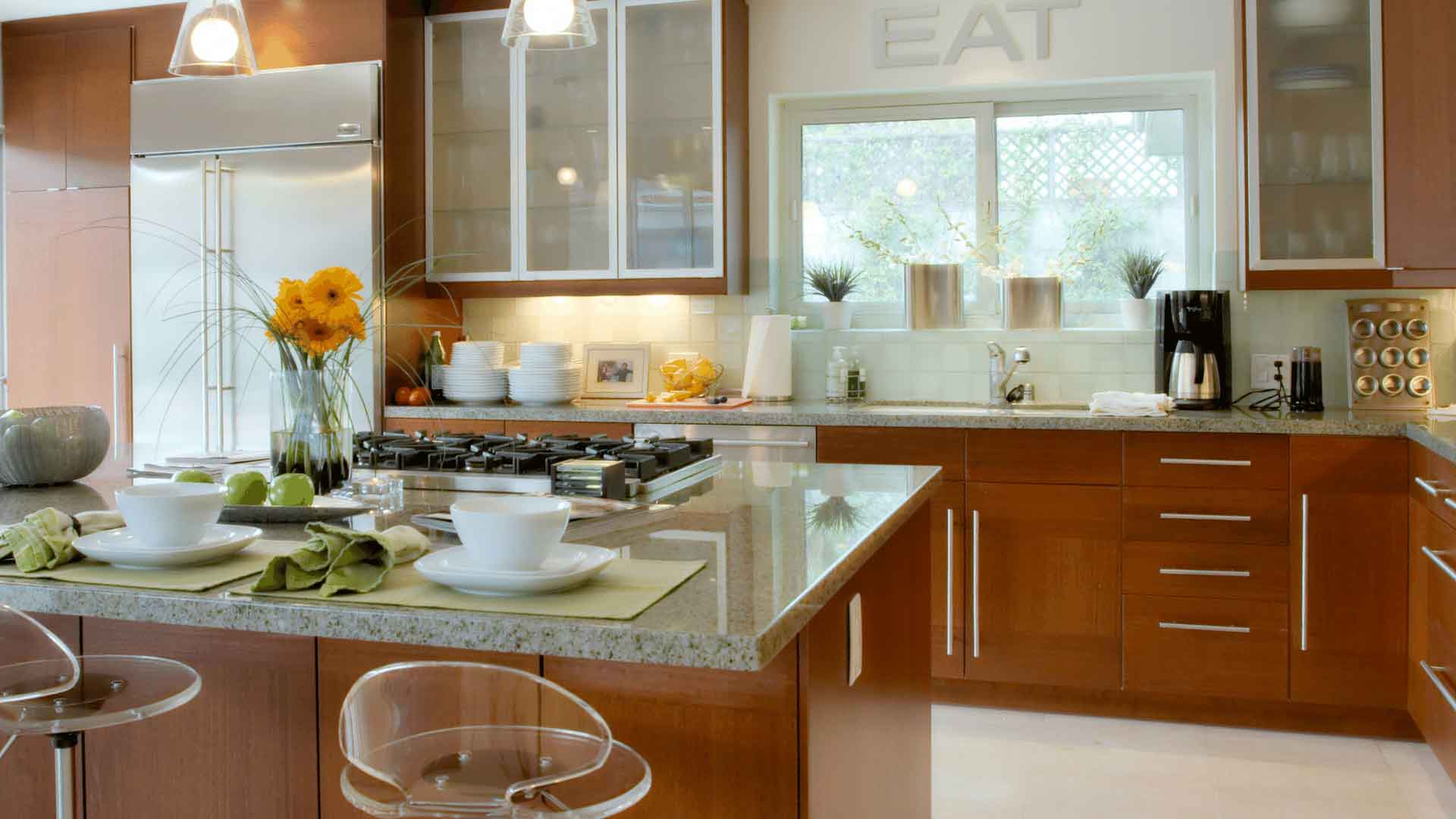Are you dreaming of a beautiful, functional kitchen but worried about the hefty price tag and overwhelming stress that often come with a renovation? Well, worry no more!
In this article, we will guide you through the process of budgeting for a kitchen renovation, providing insider tips to save both your money and sanity. When it comes to renovating your kitchen, assessing your needs and setting a realistic budget is key.
We understand that you want to create a space that reflects your style and meets your family’s needs, but it’s important to be mindful of your financial limitations. By prioritizing your expenses for maximum impact and researching prices for materials and appliances, you can make informed decisions that not only save you money but also ensure that every dollar spent has a significant effect on the overall outcome.
So let’s dive in together and discover how to transform your kitchen into the heart of your home without breaking the bank or losing sleep over it!
Assessing Your Needs and Setting a Realistic Budget
Before you can start planning your kitchen renovation, you need to assess your needs and set a realistic budget.
Take some time to really think about what you want and need in your new kitchen. Consider the functionality, layout, and design elements that are important to you. Do you need more storage space? Are you looking to upgrade your appliances? What style do you envision for your kitchen?
By assessing your needs, you can prioritize what is most important to you and create a plan that meets those requirements.
Once you have a clear understanding of what you want, it’s time to set a realistic budget. Renovations can quickly become expensive if not properly planned for, so it’s essential to establish how much money you’re willing and able to spend on your project.
Research the average costs of different aspects of a kitchen renovation, such as cabinets, countertops, flooring, and labor. This will give you an idea of what price range to expect and allow for some flexibility in case unexpected expenses arise.
Remember to also factor in any additional costs like permits or hiring professionals if needed. Setting a realistic budget from the beginning will help ensure that your kitchen renovation stays within your means while still achieving the results you desire.
Prioritizing Your Expenses for Maximum Impact
To get the most out of your kitchen renovation, start by identifying your top priorities and where you can make the biggest impact. Take a step back and think about what matters most to you in your kitchen. Is it having ample storage space, or is it creating a beautiful and inviting atmosphere?
Once you’ve determined your priorities, focus on allocating your budget accordingly. By putting your money towards the areas that’ll have the most impact, you can ensure that every dollar spent contributes to creating a kitchen that truly meets your needs.
When prioritizing your expenses, remember that sometimes small changes can make a big difference. For example, instead of splurging on brand new cabinets, consider giving them a fresh coat of paint and updating the hardware. This simple change can transform their appearance without breaking the bank.
Additionally, investing in high-quality appliances may be worth considering as they’re often used daily and can greatly enhance both functionality and aesthetics. By carefully evaluating each expense and determining where you can save without sacrificing quality or style, you’ll not only save money but also create an intimate and personalized kitchen space that suits your needs perfectly.
Researching and Comparing Prices for Materials and Appliances
When you’re researching and comparing prices for materials and appliances, don’t forget to consider factors like durability, energy efficiency, and warranty coverage to ensure you’re making the best investment for your kitchen.
It’s tempting to solely focus on finding the cheapest options available, but remember that quality matters too. Look for materials that are built to last, as they’ll save you money in the long run by not needing frequent replacements or repairs.
Additionally, energy-efficient appliances may have a higher upfront cost, but they can significantly reduce your monthly utility bills over time.
Lastly, make sure to check the warranty coverage offered by different manufacturers. Having a solid warranty can provide peace of mind, knowing that if anything goes wrong with your purchase, you’ll be protected.
As you dive into this research process, keep in mind that it’s not just about finding the best deal; it’s also about creating a space that reflects your personality and meets your needs.
Take some time to assess what features are essential for you in both materials and appliances. Do you need extra storage? Are there specific design elements or finishes you prefer? By identifying these preferences early on, you can narrow down your options and make more informed decisions.
Don’t rush through this step – take it as an opportunity to explore different possibilities and envision how each choice will impact the overall look and functionality of your new kitchen.
Remember, investing time now in thorough research will pay off later when you have a beautiful kitchen that fits both your budget and lifestyle perfectly, making you proud to show it off to friends and family.
Exploring Affordable Design Options and Alternatives
Explore cost-effective design options and alternatives to create a stunning kitchen that doesn’t break the bank. When it comes to renovating your kitchen on a budget, there are plenty of ways to achieve a beautiful look without emptying your wallet.
Consider opting for laminate countertops instead of expensive granite or quartz. Not only are they more affordable, but they also come in a wide variety of colors and patterns that can mimic the look of natural stone.
Additionally, think about using vinyl flooring instead of hardwood or ceramic tiles. Vinyl offers durability, easy maintenance, and an array of styles that can give your kitchen a sleek and modern feel at a fraction of the cost.
Another great way to save money on design is by choosing open shelving instead of traditional upper cabinets. Open shelves not only add visual interest to your kitchen but also eliminate the need for costly cabinet doors and hardware. You can display your favorite dishes and cookware while creating an open and airy atmosphere.
Additionally, consider painting or refinishing your existing cabinets rather than replacing them altogether. A fresh coat of paint or stain can completely transform the look of your cabinets without breaking the bank.
By exploring these affordable design options and alternatives, you can create a stunning kitchen space that reflects your personal style without sacrificing your budget or adding unnecessary stress to your renovation journey.
DIY vs. Hiring Professionals: Weighing the Costs and Benefits
Consider whether it’s worth the investment to hire professionals or take on a DIY approach, weighing the costs and benefits of each option. Hiring professionals may seem like the easier choice, but it can also be more expensive. Professionals have the expertise and experience to ensure a smooth renovation process, but they come with a price tag.
On the other hand, taking a DIY approach can save you money, but it requires time, effort, and skill. You’ll need to research and learn about different aspects of kitchen renovation, from plumbing to electrical work. It’s important to honestly assess your own abilities and determine if you have the necessary skills to complete the project successfully.
While hiring professionals may seem like a luxury that only adds to your expenses, there are many benefits that shouldn’t be overlooked. First and foremost is their knowledge and expertise in kitchen renovations. They know what works best in terms of design, functionality, and materials. This can save you from costly mistakes down the line. Additionally, professionals often have relationships with suppliers and contractors which can lead to discounts on materials or even lower labor costs.
Moreover, by hiring professionals you’re freeing up your time and energy for other things in your life – they’ll take care of all the details while you focus on enjoying your new kitchen transformation! Ultimately, consider both options carefully before making a decision that aligns with your budget constraints as well as your personal goals for the renovation project.

Maximizing Space and Storage Efficiency
To make the most of your kitchen space, it’s essential to maximize storage efficiency by utilizing clever storage solutions and optimizing organizational systems. Start by evaluating your current storage needs and identifying any areas that could be better utilized.
Consider installing pull-out shelves or drawers in lower cabinets to make accessing items easier and prevent wasted space. Utilize vertical space by adding shelving or hanging racks on empty walls for storing pots, pans, or utensils. Magnetic strips can also be a great way to keep knives and metal tools within reach without taking up valuable counter space.
Another great tip is to invest in multi-functional furniture pieces. For example, consider purchasing an island with built-in storage or a dining table with hidden compartments for storing linens or servingware. This not only saves space but also adds functionality to your kitchen.
Don’t forget about the importance of proper organization as well. Use dividers in drawers to separate utensils and keep them neat and accessible. Label jars and containers in the pantry to avoid confusion and ensure everything has its place.
By implementing these clever storage solutions and organizational systems, you’ll not only maximize your kitchen space but also create a more efficient cooking environment. So go ahead, get creative with your storage options, and enjoy a clutter-free kitchen that meets all your needs effortlessly!
Avoiding Common Budgeting Pitfalls and Unexpected Costs
Now that you’ve learned how to maximize space and storage efficiency in your kitchen renovation, it’s time to dive into another crucial aspect: avoiding common budgeting pitfalls and unexpected costs.
When it comes to remodeling your kitchen, staying within budget can be a challenging task, but with the right knowledge and approach, you can save yourself from unnecessary stress and financial strain.
One of the most common budgeting pitfalls is underestimating the overall cost of the project. It’s essential to have a clear understanding of all the expenses involved, including materials, labor, permits, and any unforeseen issues that may arise during construction. By thoroughly researching and getting multiple quotes from contractors or suppliers, you can ensure that you have an accurate estimate of what your renovation will cost.
Additionally, it’s important to set aside some extra funds for any unexpected costs that may come up along the way. Whether it’s uncovering hidden damage or last-minute design changes, having a contingency plan in place will help you navigate these surprises without breaking the bank.
Remember, planning is key when it comes to avoiding budgeting pitfalls. Take your time to research prices thoroughly and gather multiple quotes before committing to any purchases or hiring contractors. By being proactive and prepared for potential obstacles, you’ll be able to navigate your kitchen renovation smoothly while keeping both your stress levels and expenses under control.







